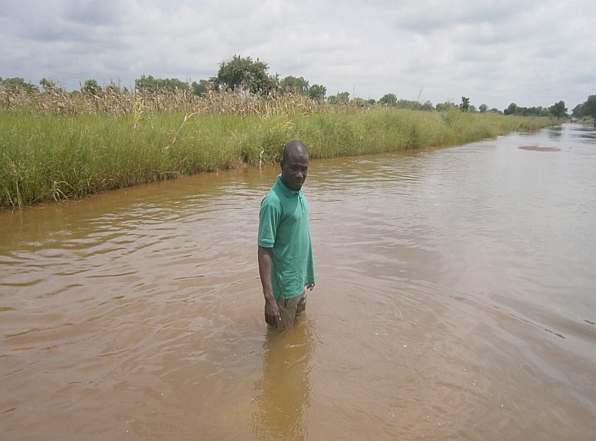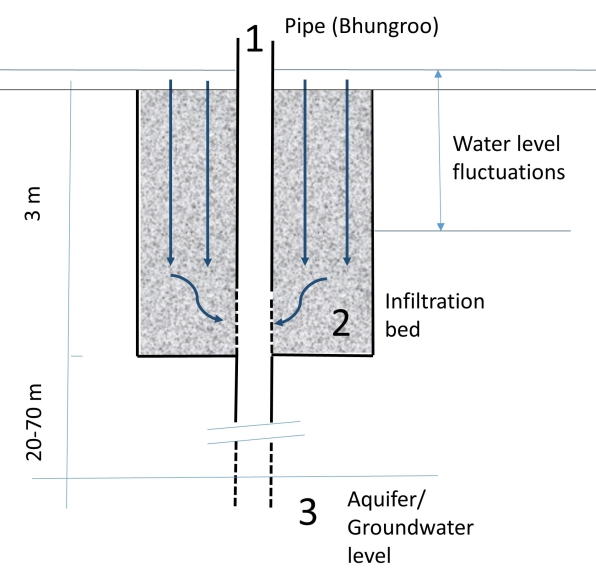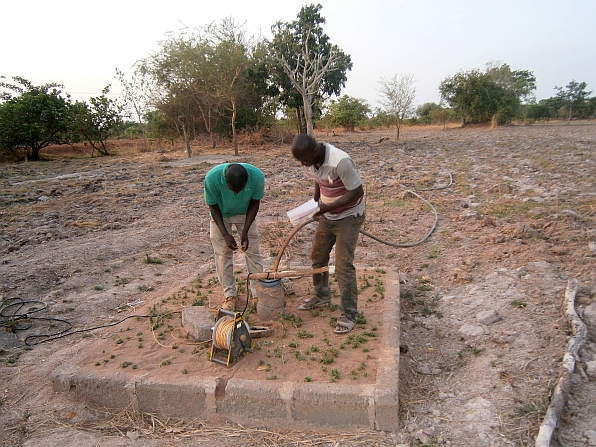What to do about too much and too little water in northern Ghana

A remote stretch of land in northern Ghana between the cities of Tamale and Bolgatanga has earned the nickname “Overseas” – not because life is better there, as the term usually implies, but, ironically, because in many ways it is worse. For several months every year, a combination of bad roads, incessant rain and flooding along tributaries of the White Volta River completely cuts the area off from the surrounding territory. This seriously undermines food security and rural livelihoods, which are further compromised by frequent droughts as well as water scarcity in the dry season.
The predicament of Overseas is just an extreme version of conditions prevailing all across this area of the country – too much water for part of the year, not enough during the rest. The conditions thus seem right for introducing techniques developed under similar circumstances elsewhere to capture standing flood water in the rainy season, store it underground, and make it available for crop irrigation and domestic use in the dry season. Such techniques involve significant investment, however, so it is important to determine whether an option is well suited to the conditions at a given location.
To provide a knowledge base for smart decisions, the International Water Management Institute (IWMI) undertook research on a particularly promising option – called Bhungroo irrigation technology – in collaboration with the Conservation Alliance. This organization introduced the technique to Ghana in 2015, with assistance from Naireeta Services (a private firm in India) and the focal region program of the CGIAR Research Program on Water, Land and Ecosystems (WLE). The work also received support from the US Agency for International Development (USAID) through a project implemented by the International Fertilizer Development Center (IFDC).
First developed and widely adopted in India’s Gujarat State, the technology is theoretically capable of storing 40,000 cubic meters of water. Although the average amount is only a tenth of that, it is still enough to supply irrigation water for 7 months. Reports from India suggest that the technology has significantly boosted incomes and enhanced livelihoods.

Bhungroo means “straw” in Gujarati, referring to the technology’s main component, a borehole with a system of pipes containing screens to keep out debris. This is the means by which Bhungroo harvests water, articially augmenting the natural movement of surface water into the aquifer. The technology also includes a storage bed (unsaturated layers of the aquifer 8 to 25 meters deep) as well as an irrigation component, consisting of a water pump, overhead storage structure, and a drip or sprinkler system. If properly maintained, the Bhungroo technology typically has a lifespan of up to 30 years.
Project research resulted in a publication titled Adapting Aquifer Storage and Recovery Technology to the Flood-prone Areas of Northern Ghana for Dry-season Irrigation (IWMI Working Paper 176), which describes a methodology for selecting appropriate sites. Researchers assessed land suitability for the Bhungroo technology, using remote sensing and geographic information systems (GIS) with a decision analysis technique based on multiple criteria. These range from technical considerations, such as the water source and hydraulics of the aquifer, to environmental impacts and socio-economic factors.
Study results, reported in the journal Modelling Earth Systems and Environment, show that about 40% of northern Ghana is suitable for the technology. However, not all of the information required is available in spatial format. Moreover, final site selection depends on local groundtruthing – to assess socio-economic conditions, for example. On this basis, researchers installed and tested the technology at three sites: the Jagsi and Kpasenkpe communities in Northern Region’s West Mamprusi District and Weisi community in Builsa South District, Upper East Region.

At these sites, local communities are well aware of the limitations imposed by the combination of flooding in the rainy months and water scarcity in the dry season, and they are keen to find solutions, including a willingness to address issues of gender equality. All of this suggests that there is considerable scope for further piloting and scaling out the Bhungroo technology, using materials that are readily available in northern Ghana.
However, if the technology is to generate long-term benefits that outweigh the initial investment and costs of operation and maintenance, it will be essential for implementing agencies to pay close attention to the strict requirements outlined in the IWMI Working Paper. The key is to rely on holistic assessments that encompass all of the parameters, including various hydrogeological factors, which are essential for the Bhungroo technology to flourish.
Read the report:
Owusu, Seth; Cofie, Olufunke O.; Osei-Owusu, P. K.; Awotwe-Pratt, V.; Mul, Marloes L. 2017. Adapting aquifer storage and recovery technology to the flood-prone areas of northern Ghana for dry-season irrigation. Colombo, Sri Lanka: International Water Management Institute (IWMI) 35p.

